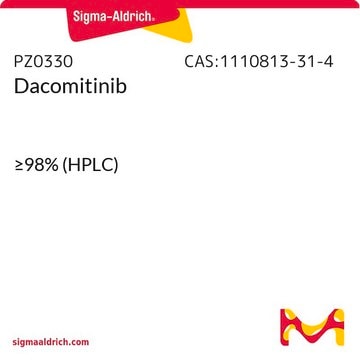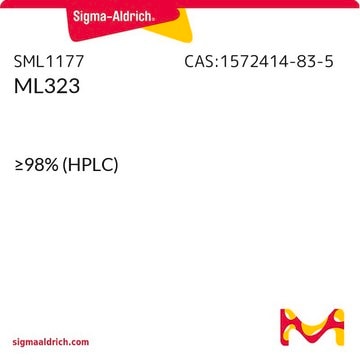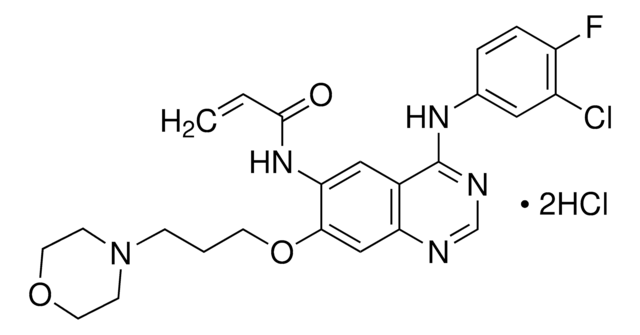Unfortunately, the solution stability of this product is not determined.
SML2156
Erlotinib hydrochloride
≥98% (HPLC)
Synonyme(s) :
774 hydrochloride, CP-358, N-(3-ethynylphenyl)-6,7-bis(2-methoxyethoxy)-4-quinazolinamine hydrochloride, OSI-744 hydrochloride
Sélectionner une taille de conditionnement
65,20 €
Sélectionner une taille de conditionnement
About This Item
65,20 €
Produits recommandés
Essai
≥98% (HPLC)
Forme
powder
Conditions de stockage
desiccated
Couleur
white to beige
Solubilité
DMSO: 2 mg/mL, clear (warmed)
Température de stockage
−20°C
Chaîne SMILES
Cl.N(c3cc(ccc3)C#C)c1ncnc2c1cc(c(c2)OCCOC)OCCOC
InChI
1S/C22H23N3O4.ClH/c1-4-16-6-5-7-17(12-16)25-22-18-13-20(28-10-8-26-2)21(29-11-9-27-3)14-19(18)23-15-24-22;/h1,5-7,12-15H,8-11H2,2-3H3,(H,23,24,25);1H
Clé InChI
GTTBEUCJPZQMDZ-UHFFFAOYSA-N
Description générale
Application
Actions biochimiques/physiologiques
Mention d'avertissement
Warning
Mentions de danger
Conseils de prudence
Classification des risques
Acute Tox. 4 Oral
Code de la classe de stockage
11 - Combustible Solids
Classe de danger pour l'eau (WGK)
WGK 3
Point d'éclair (°F)
Not applicable
Point d'éclair (°C)
Not applicable
Faites votre choix parmi les versions les plus récentes :
Certificats d'analyse (COA)
Vous ne trouvez pas la bonne version ?
Si vous avez besoin d'une version particulière, vous pouvez rechercher un certificat spécifique par le numéro de lot.
Déjà en possession de ce produit ?
Retrouvez la documentation relative aux produits que vous avez récemment achetés dans la Bibliothèque de documents.
Les clients ont également consulté
-
How long is your erlotinib hydrochloride stable as aliquots dissolved in DMSO or water at -20 degrees? And how long is it stable when added to cell culture medium at 37 degrees at 5% CO2?
1 answer-
Helpful?
-
Active Filters
Notre équipe de scientifiques dispose d'une expérience dans tous les secteurs de la recherche, notamment en sciences de la vie, science des matériaux, synthèse chimique, chromatographie, analyse et dans de nombreux autres domaines..
Contacter notre Service technique
















